The Time Is Here for Workplace Education on Life Insurance
The Millennials & Life Insurance Survey, recently released by Greenwald Research, found that the COVID-19 pandemic has spurred an interest in the purchase of life insurance among Millennials, Americans aged 23 to 38. A significant minority of this segment of the US population says they have purchased life insurance since the beginning of the pandemic or that they are planning to purchase coverage in the next twelve months. Although this study found a large majority of Millennials agreeing that people like them should have life insurance, many still do not have sufficient coverage, or any coverage at all. Premature death can have devastating financial impacts on the unprepared. But with COVID-19 as an almost daily reminder that death can occur at any age, the numbers show that despite this group’s positive outlook on life insurance, they are failing to act. One solution to this problem remains largely unexplored; workplace education can help fill the gaps in Millennials’ understanding of life insurance.
How Millennials View Life Insurance Today
Greenwald’s Millennial Life Insurance Survey confirms that many Millennials view life insurance policies as too expensive and possess a false sense of confidence regarding how much life insurance they need. While most somewhat agree they have a clear understanding of their coverage requirements, study data reveals Millennials aren’t taking the necessary steps to arrive at an answer.
Several inconsistencies exist in the modern Millennial’s perspective on life insurance, with their take on technology one of the most surprising. Most Millennials surveyed would prefer to gather information through a financial adviser before purchasing a policy, but not many do. Those who obtain life insurance outside of work make their purchase entirely online, but only a small minority indicates this as their preference. And while an overwhelming majority of Millennials say that they would use online tools to calculate coverage needs, again a small minority reported using such tools.
Inadequate planning leaves many Millennials underinsured. The Millennial Life Insurance Survey indicates that an overwhelming majority intend to purchase more life insurance and a substantial number have under $250K in coverage. Even more problematic, few participants believe their family would be okay financially if their spouse or they themselves were to die prematurely. The research also suggests that this failure to engage in the planning process extends beyond life insurance coverage; very few Millennials surveyed have coordinated a will, power of attorney, or transfer of asset agreement upon death.
Where Life Insurance Learning Can Take Place
As with any complex product, a lack of knowledge—enough to understand the purpose and value of life insurance—can become an obstacle to purchase. Education from employers holds the highest potential for addressing the inadequacy of life insurance coverage among Millennials. Because life insurance is so often acquired at work, the workplace can be a highly effective place for younger Americans to learn about the value of policies and explore their coverage options. Employers can offer life insurance as a voluntary benefit, spread awareness through general education or workplace wellness programs, and encourage policy planning and purchase.
Based on the opinions observed in this new study, there may be several beneficial lessons employees can learn about life insurance, including the real cost of coverage and the ease of purchasing a policy.
- Life insurance is not expensive. Employers can communicate to their teams that coverage is a manageable expense. Employees interested in policies that aren’t offered through an employer can also easily find inexpensive alternatives outside of the workplace with individualized underwriting that often reduces cost for health applicants.
- Simple online tools can calculate coverage needs. Employers can share resources for determining coverage goals and amounts or conduct training to demonstrate tool use and walk through life insurance products offered at the workplace.
Workplace wellness programs are great opportunities for life insurance education. Previous research from the Greenwald team, like the 2020 Workplace Wellness Survey, suggests health and well-being programs are often geared toward Millennials. They are frequently structured around major life events and challenging topics, such as debt management and financial security. Many Greenwald studies point to the birth of children and marriage as the two biggest drivers of interest in life insurance protection. And in the Millennial Life Insurance Survey, paying off a mortgage and helping with family debt are the most important reasons respondents give for having life insurance. The clear alignment of employer wellness programs and Millennial life insurance behaviors makes this group perhaps the most suitable target for life insurance education.
Finding ways to resolve the disconnect between consumer intentions and behaviors will help improve overall financial management for Millennials today. As businesses continue to adjust recruitment efforts, optimize internal processes, and retrofit their culture around remote or hybrid work during the pandemic, employers should examine their current policy offerings and consider educating teams more on the importance of life insurance.
Interested in learning more? Full findings from the Millennials & Life Insurance Survey are available for purchase along with Greenwald’s recent Rethinking Retirement Survey. To gain early access to future study results or talk more with our team about Millennial life insurance education, get in touch with Greenwald.








